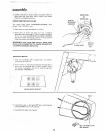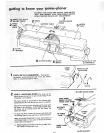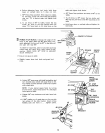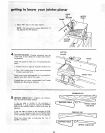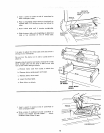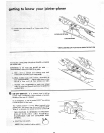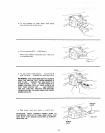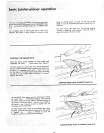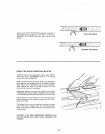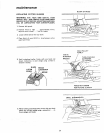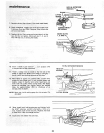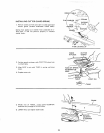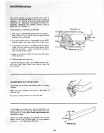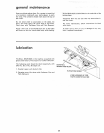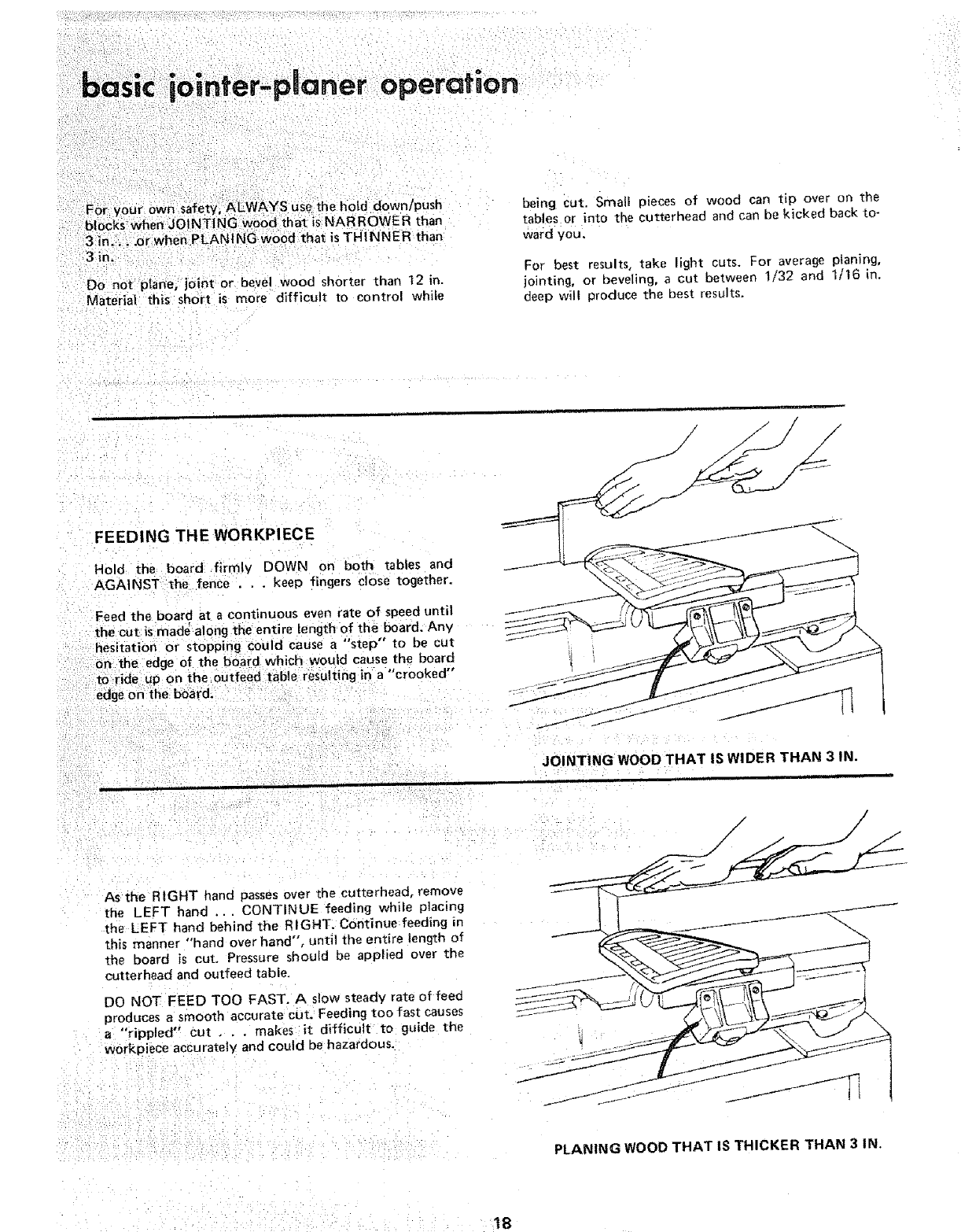
operation
F_)r your own safety ALWAYS use the hold downlpush
blocks when JOINTING wood that is NAR ROWER than
3"in.. _.o t when PLANING Wood that is TH IN N E R than
3in.
Do not plane, joint or bevel wood shorter than 12 in.
Material this short is more difficult to control while
being cut. Small pieces of wood can tip over on the
tables or into the cutterhead and can be kicked back to-
ward VOU.
For best results, take light cuts. For average ptaning,
jointing, or beveling, a cut between 1/32 and 1[t6 in.
deep will produce the best results.
FEEDING THE WORKPIECE
Hold the board firmly DOWN on both tables and
AGAINST the fence . . . keep fingers close together.
Feed the board at a continuous even rate of speed until
the cut is.made alon.g the entire length of the board. Any
hesitation or stopping could cause a "step" to be cut
on the edge of the board which would cause the board
to ride up on the:outfeed table resulting in a crooked
e_lge on the board.
JOINTING WOOD THAT IS WIDER THAN 3 IN.
/
As the RIGHT hand passes over the cutterhead, remove
the LEFT hand ... CONTINUE feeding while placing
the LEFT hand behind the RIGHT. Continue feeding in
this manner "hand over hand", until the entire length of
the board is cut. Pressure should be applied over the
cutterhead and outfeed table.
DO NOT FEED TOO FAST. A slow steady rate of feed
produces a smooth accurate cut. Feeding too fast causes
a "rippled" cut . . . makes it difficult to guide the
workpiece accurately and could be hazardous.
PLANING WOOD THAT IS THICKER THAN 3 IN.



